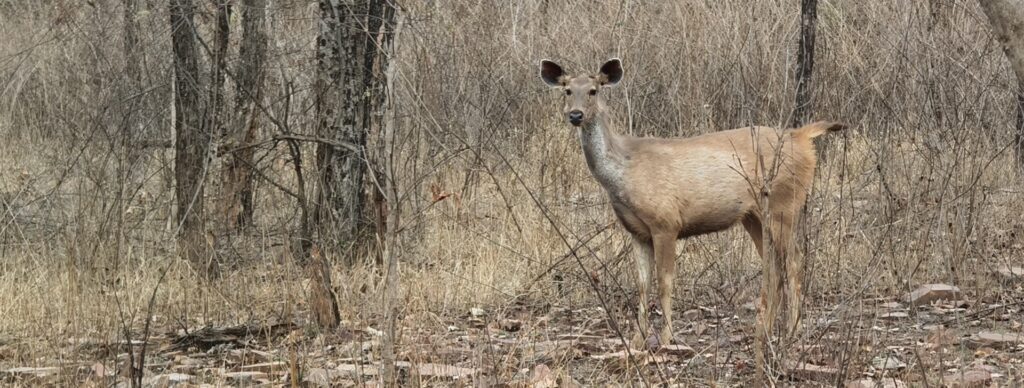
While tigers are often the showstoppers of Indian safaris, the Sambar Deer (Rusa unicolor) is the true guardian of the forest. On a safari through Panna National Park, a glimpse of this majestic animal standing tall among dry sal and teak forests is unforgettable. Its alert stance, deep gaze, and ability to sense danger make it one of the most reliable “alarm systems” of the jungle.
About the Species: Sambar Deer
The Sambar Deer is the largest deer species in India. Males are distinguished by their rugged antlers, while females (like the one in your image) are antler-less but equally graceful. Their coarse brown coat blends beautifully with the forest, providing natural camouflage against predators.
Interesting Facts About Sambar Deer
- Nature’s Alarm Bell: Sambar deer give a sharp, loud “alarm call” when they sense a predator nearby, often alerting other animals and even safari guides to the presence of a tiger or leopard
- Forest Foragers: They are herbivores, feeding on leaves, grasses, and fruits—helping in seed dispersal and forest regeneration.
- Wide Distribution: Found not only in India but also across South Asia, Southeast Asia, and parts of China
- Night Wanderers: Unlike many deer, Sambars are known to be nocturnal grazers, often active at night.
Sambar at Panna Safari Experience
Spotting a sambar deer in the wild is a thrilling experience. Their piercing eyes and still posture can stop you in your tracks. Sometimes, their alarm call is the very reason safari jeeps pause—because
The Sambar Deer of Panna Forest is more than just prey—it’s a keystone species that balances the ecosystem. From alerting the forest of predators to maintaining vegetation, these silent guardians remind us that even the most unassuming animals play a powerful role in the jungle drama.
